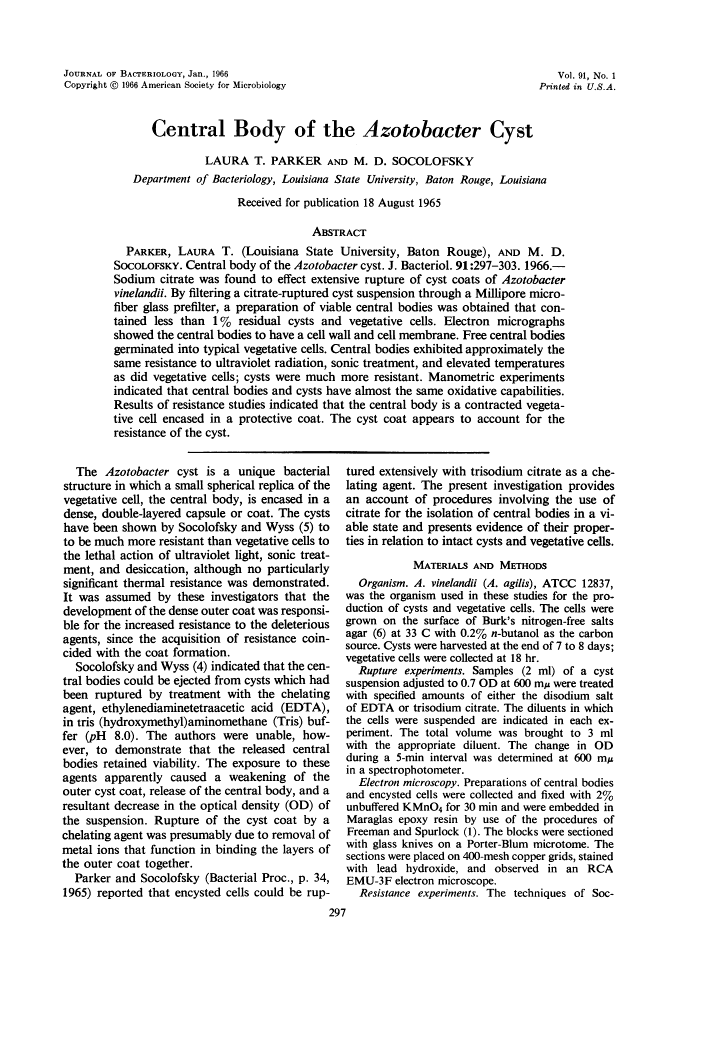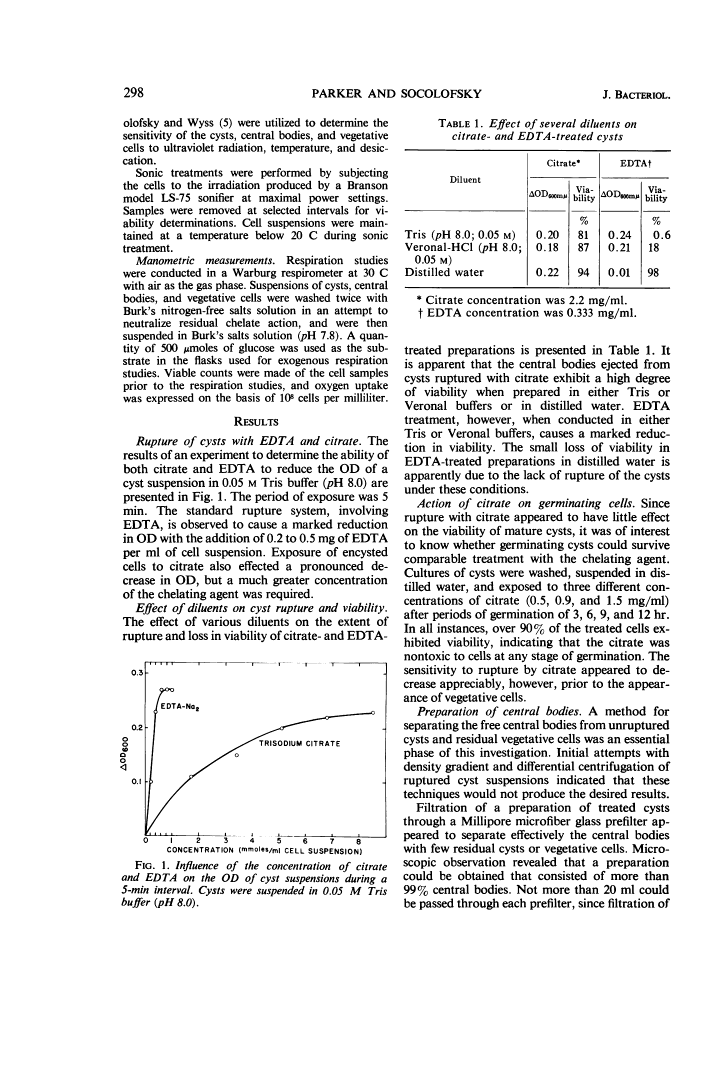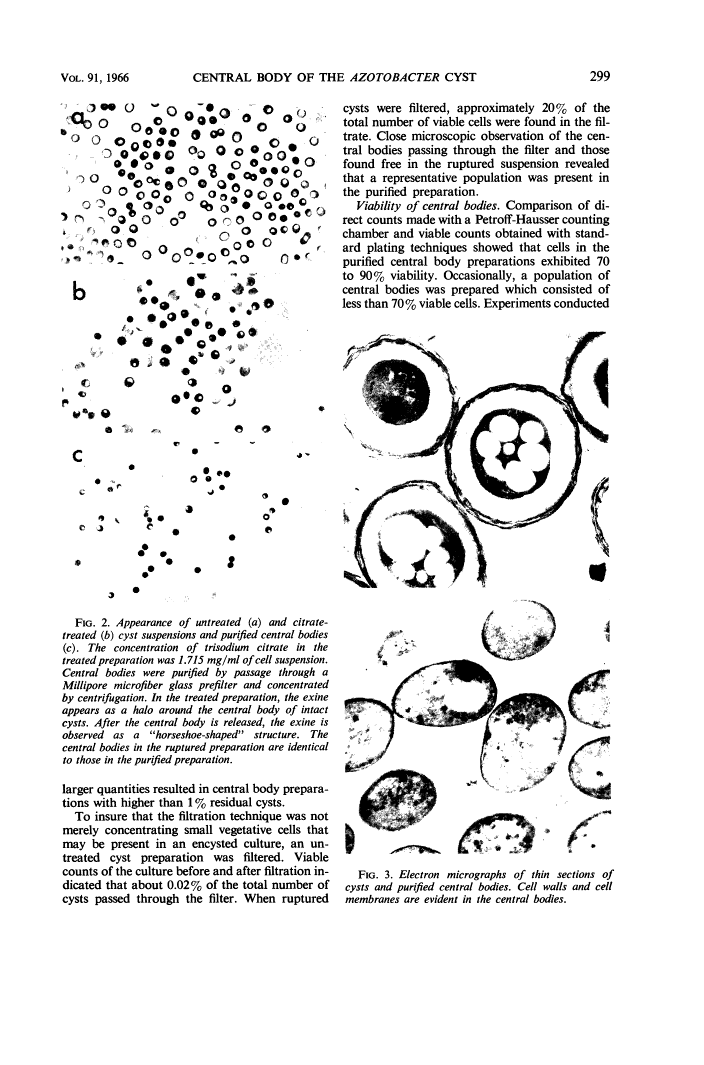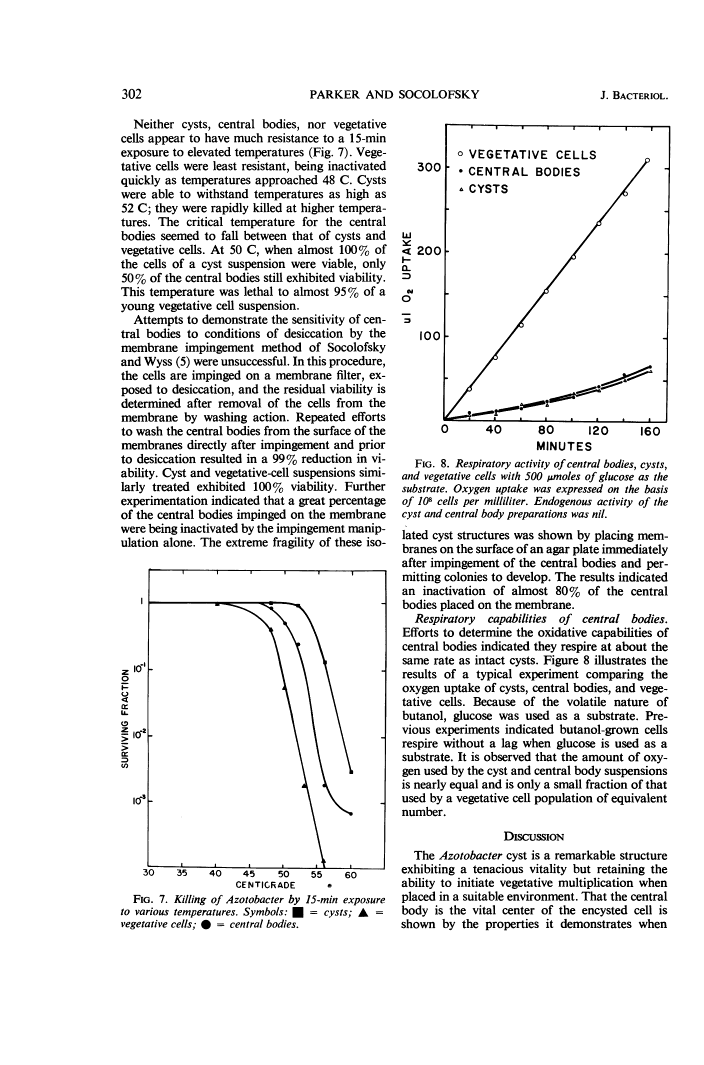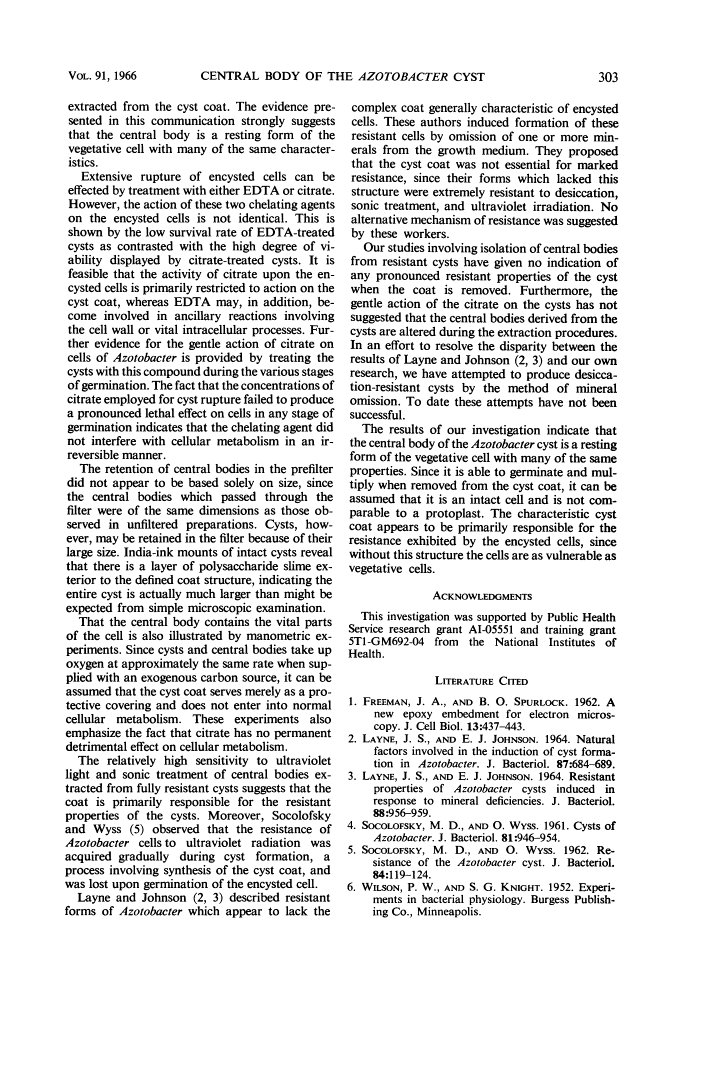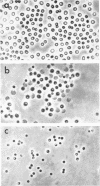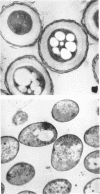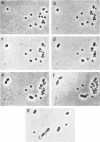Abstract
Free full text

Central Body of the Azotobacter Cyst
Abstract
Parker, Laura T. (Louisiana State University, Baton Rouge), and M. D. Socolofsky. Central body of the Azotobacter cyst. J. Bacteriol. 91:297–303. 1966.—Sodium citrate was found to effect extensive rupture of cyst coats of Azotobacter vinelandii. By filtering a citrate-ruptured cyst suspension through a Millipore microfiber glass prefilter, a preparation of viable central bodies was obtained that contained less than 1% residual cysts and vegetative cells. Electron micrographs showed the central bodies to have a cell wall and cell membrane. Free central bodies germinated into typical vegetative cells. Central bodies exhibited approximately the same resistance to ultraviolet radiation, sonic treatment, and elevated temperatures as did vegetative cells; cysts were much more resistant. Manometric experiments indicated that central bodies and cysts have almost the same oxidative capabilities. Results of resistance studies indicated that the central body is a contracted vegetative cell encased in a protective coat. The cyst coat appears to account for the resistance of the cyst.
Full text
Full text is available as a scanned copy of the original print version. Get a printable copy (PDF file) of the complete article (2.2M), or click on a page image below to browse page by page. Links to PubMed are also available for Selected References.
Images in this article
Selected References
These references are in PubMed. This may not be the complete list of references from this article.
- FREEMAN JA, SPURLOCK BO. A new epoxy embedment for electron microscopy. J Cell Biol. 1962 Jun;13:437–443. [Europe PMC free article] [Abstract] [Google Scholar]
- LAYNE JS, JOHNSON EJ. NATURAL FACTORS INVOLVED IN THE INDUCTION OF CYST FORMATION IN AZOTOBACTER. J Bacteriol. 1964 Mar;87:684–689. [Europe PMC free article] [Abstract] [Google Scholar]
- LAYNE JS, JOHNSON EJ. RESISTANT PROPERTIES OF AZOTOBACTER CYSTS INDUCED IN RESPONSE TO MINERAL DEFICIENCIES. J Bacteriol. 1964 Oct;88:956–959. [Europe PMC free article] [Abstract] [Google Scholar]
- Socolofsky MD, Wyss O. CYSTS OF AZOTOBACTER. J Bacteriol. 1961 Jun;81(6):946–954. [Europe PMC free article] [Abstract] [Google Scholar]
- SOCOLOFSKY MD, WYSS O. Resistance of the Azotobacter cyst. J Bacteriol. 1962 Jul;84:119–124. [Europe PMC free article] [Abstract] [Google Scholar]
Associated Data
Articles from Journal of Bacteriology are provided here courtesy of American Society for Microbiology (ASM)
Full text links
Read article at publisher's site: https://doi.org/10.1128/jb.91.1.297-303.1966
Read article for free, from open access legal sources, via Unpaywall:
https://jb.asm.org/content/jb/91/1/297.full.pdf
Free after 4 months at jb.asm.org
http://jb.asm.org/cgi/reprint/91/1/297
Free to read at jb.asm.org
http://jb.asm.org/cgi/content/abstract/91/1/297
Citations & impact
Impact metrics
Article citations
Production of polyhydroxybutyrate and alginate from glycerol by Azotobacter vinelandii under nitrogen-free conditions.
Bioengineered, 6(4):209-217, 16 Apr 2015
Cited by: 7 articles | PMID: 25880041 | PMCID: PMC4601296
Mannuronan C-5 epimerases and cellular differentiation of Azotobacter vinelandii.
Environ Microbiol, 2(1):27-38, 01 Feb 2000
Cited by: 25 articles | PMID: 11243259
Lipid metabolism during encystment of Azotobacter vinelandii.
J Bacteriol, 145(2):889-895, 01 Feb 1981
Cited by: 18 articles | PMID: 7462162 | PMCID: PMC217195
Endogenous encystment of Azotobacter vinelandii.
J Bacteriol, 100(1):475-479, 01 Oct 1969
Cited by: 9 articles | PMID: 5344107 | PMCID: PMC315416
Encystment and germination in Azotobacter vinelandii.
Bacteriol Rev, 39(4):516-539, 01 Dec 1975
Cited by: 73 articles | PMID: 1212151 | PMCID: PMC408343
Go to all (13) article citations
Similar Articles
To arrive at the top five similar articles we use a word-weighted algorithm to compare words from the Title and Abstract of each citation.
Preparation and ultrastructure of the outer coats of Azotobacter vinelandii cysts.
J Bacteriol, 98(3):1335-1341, 01 Jun 1969
Cited by: 11 articles | PMID: 4977988 | PMCID: PMC315331
Cyst formation and poly-beta-hydroxybutyric acid accumulation in Azotobacter.
J Bacteriol, 91(1):304-310, 01 Jan 1966
Cited by: 36 articles | PMID: 5903098 | PMCID: PMC315949
Resistance of the Azotobacter cyst.
J Bacteriol, 84:119-124, 01 Jul 1962
Cited by: 33 articles | PMID: 13914732 | PMCID: PMC277776
Giant cysts and cysts with multiple central bodies in Azotobacter vinelandii.
J Bacteriol, 107(1):315-319, 01 Jul 1971
Cited by: 8 articles | PMID: 4105031 | PMCID: PMC246917
